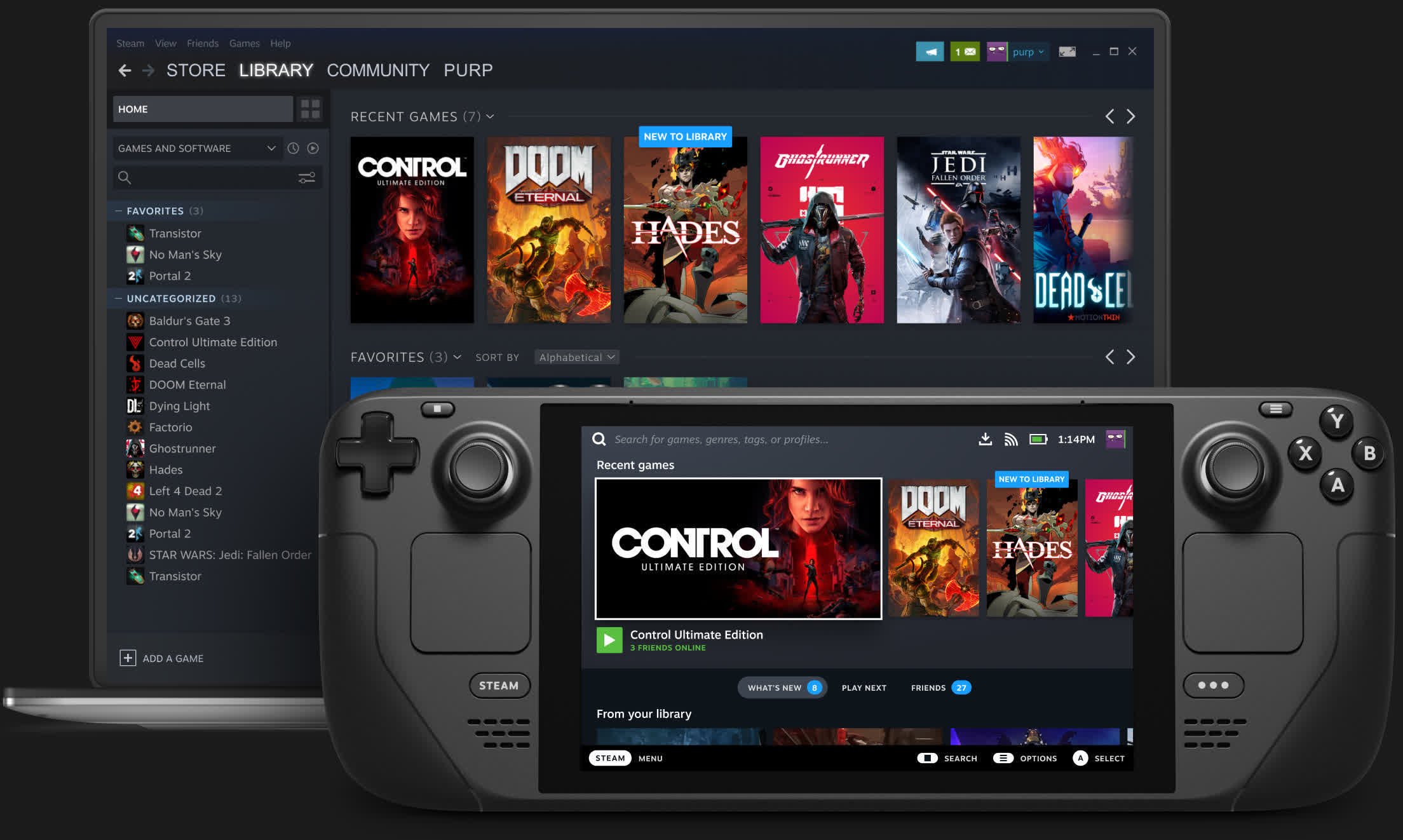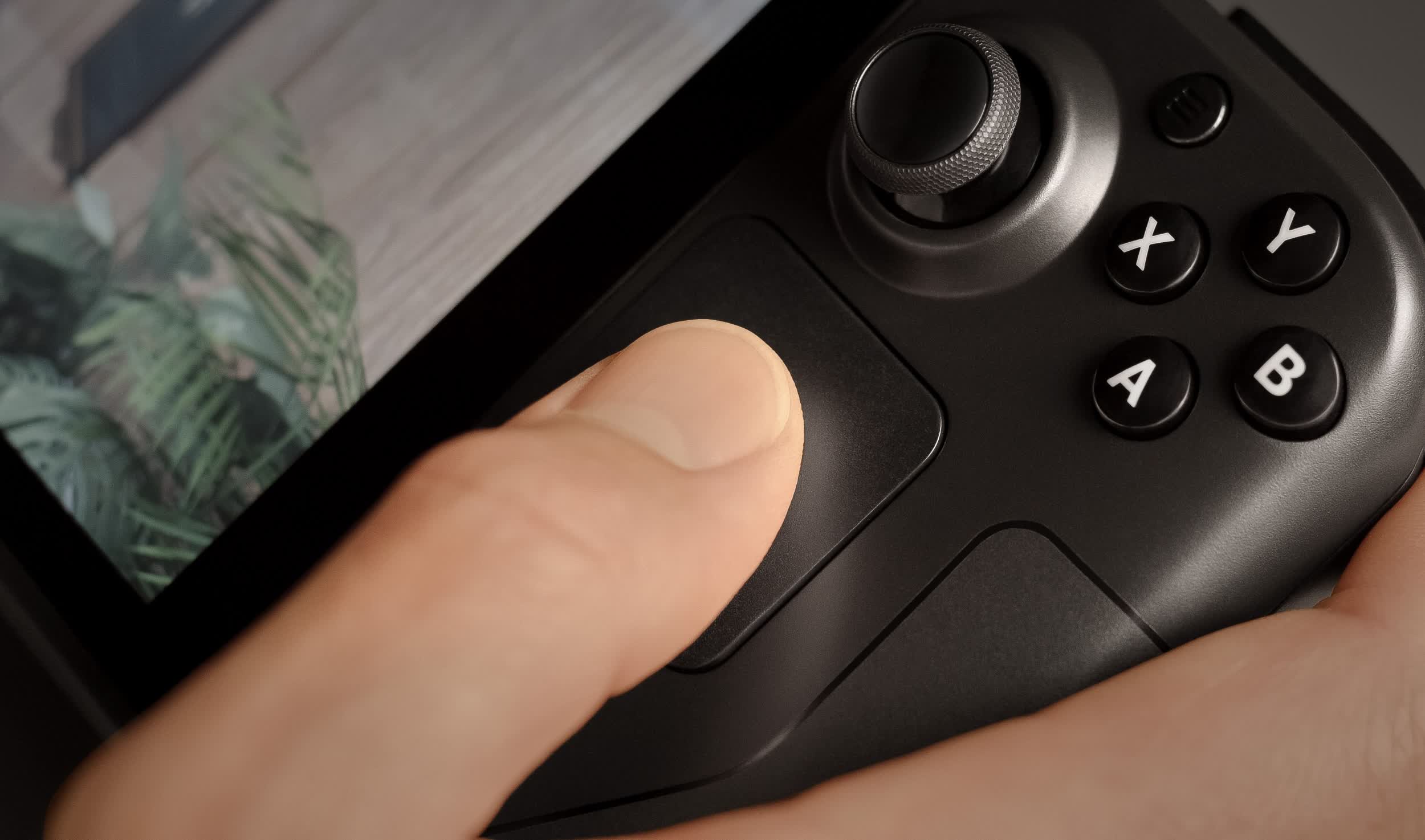In brief: We already know that the Steam Deck will have more features than your typical handheld gaming console, and Valve has just revealed another of its functions: the ability to be used as a PC controller. But one thing it won't have is support for external GPUs, which was pretty much expected, admittedly.
In a new FAQ, Valve answers what it says are the 20 most popular questions about Steam Deck. Probably the most interesting revelation is confirmation that the handheld can be used as a controller for your PC games. All you have to do is connect the Steam Deck to your computer via Remote Play.
In addition to its touchscreen, the Steam Deck boasts capacitive thumbsticks, trackpads, extra rear buttons, a gyroscope, and haptic feedback, so being able to use it as a PC controller sounds like a potentially exciting prospect.

Elsewhere in the FAQ, Valve says that the Steam Deck will support multi-boot, meaning users can have multiple OSes installed and choose which one to boot into when powering up the machine. You will even be able to boot directly from an SD card.
Additionally, the Steam Deck will work with VR headsets. However, Valve says it is not optimized for PC VR---don't expect its custom Zen-2 APU to provide enough power required for an enjoyable virtual reality experience.
It's also confirmed that users won't be able to boost the Steam Deck's graphical power by connecting it to an external GPU enclosure. Microsoft never mentioned anything about it having Thunderbolt, so this isn't totally surprising. Valve adds that docking it won't improve performance, and its UI is replacing Steam's Big Picture mode---two things we already knew. You can also have multiple accounts on one Steam Deck, each with its own local save data and settings.
We recently heard that Valve has been collaborating with AMD to develop an improved Linux CPU driver that will benefit both the Steam Deck and PCs equipped with Zen 2 Ryzen CPUs and APUs, giving users a good reason to use the device's Arch Linux-based SteamOS 3.0.
